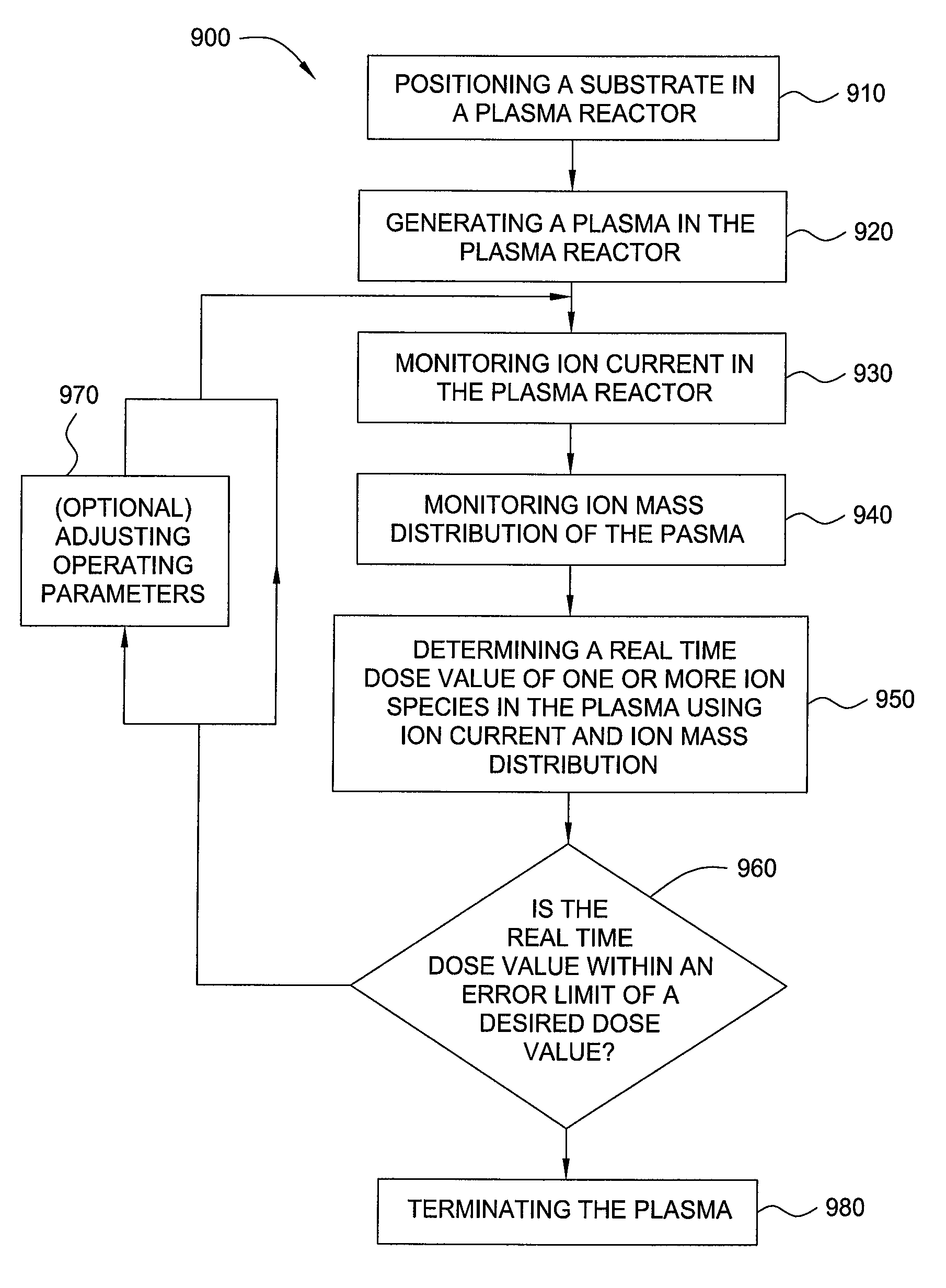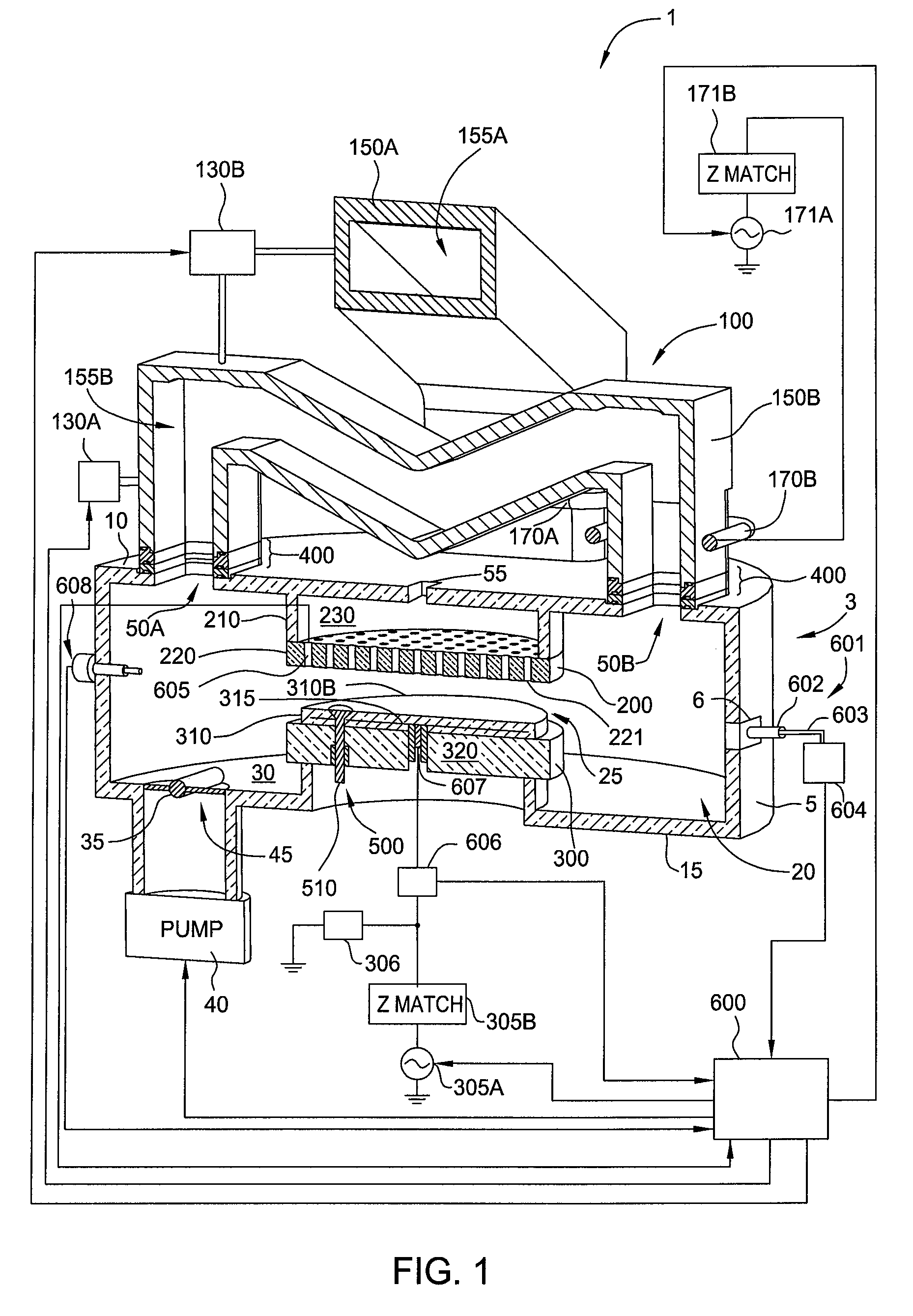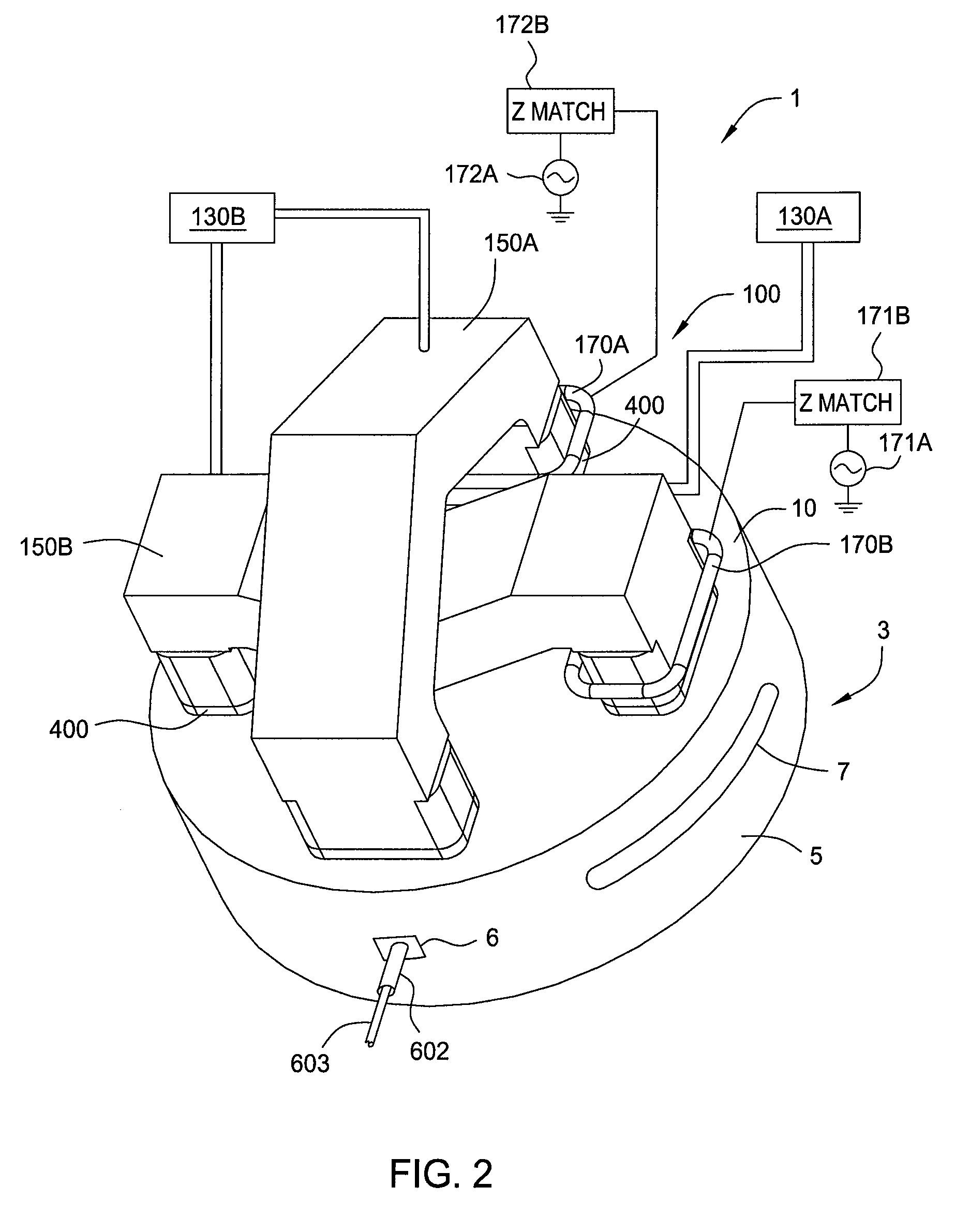Dosimetry using optical emission spectroscopy/residual gas analyzer in conjunction with ion current
a technology of optical emission spectroscopy and residual gas analyzer, which is applied in the direction of material analysis using wave/particle radiation, instruments, vacuum evaporation coating, etc., can solve the problems of difficult to determine the atomic weight of the ions incident on the substrate, the difficulty of determining the boron dose from a measured current, and the difficulty of the plasma immersion ion implantation reactor
- Summary
- Abstract
- Description
- Claims
- Application Information
AI Technical Summary
Benefits of technology
Problems solved by technology
Method used
Image
Examples
Embodiment Construction
[0023]Embodiments of the present invention provide methods for controlling ion dosages in real time during plasma processes and apparatus for performing the methods.
[0024]FIG. 1 schematically illustrates an isometric cross-sectional view of a plasma chamber 1 in accordance with one embodiment of the present invention. The plasma chamber 1 may be configured for a plasma enhanced chemical vapor deposition (PECVD) process, a high density plasma chemical vapor deposition (HDPCVD) process, an ion implantation process, an etch process, and other plasma processes.
[0025]The plasma chamber 1 comprises a toroidal plasma source 100 coupled to a body 3 of the plasma chamber 1. The body 3 comprises sidewalls 5 coupled to a lid 10 and a bottom 15, which bounds an interior volume 20. Other examples of the plasma chamber 1 may be found in U.S. Pat. No. 6,939,434, filed Jun. 5, 2002 and issued on Sep. 6, 2005 and U.S. Pat. No. 6,893,907, filed Feb. 24, 2004 and issued May 17, 2005, both of which are...
PUM
| Property | Measurement | Unit |
|---|---|---|
| wavelengths | aaaaa | aaaaa |
| total ion current | aaaaa | aaaaa |
| optical emission | aaaaa | aaaaa |
Abstract
Description
Claims
Application Information
 Login to View More
Login to View More - R&D
- Intellectual Property
- Life Sciences
- Materials
- Tech Scout
- Unparalleled Data Quality
- Higher Quality Content
- 60% Fewer Hallucinations
Browse by: Latest US Patents, China's latest patents, Technical Efficacy Thesaurus, Application Domain, Technology Topic, Popular Technical Reports.
© 2025 PatSnap. All rights reserved.Legal|Privacy policy|Modern Slavery Act Transparency Statement|Sitemap|About US| Contact US: help@patsnap.com



